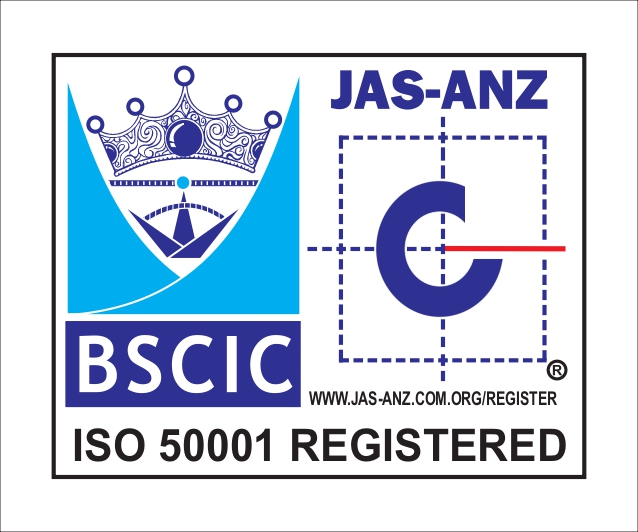This ISO Management System will be accredited by JAS-ANZ
(Joint Accreditation of Australia and New Zealand)
 Objective: The primary goals of the ISO 50001 standard are to continually enhance energy performance and efficiency and to locate opportunities for energy savings. Organizations can develop systems and processes with the aid of this systems approach. Organizations can realize untapped energy efficiency potential with consistent energy management. In addition to cutting costs, they also considerably advance environmental and climate protection, for instance by reducing CO2 emissions over the long term. The requirement should make management and staff, in particular, aware of the short- and long-term advantages of energy management. Potential cost reductions and competitive advantages are available to an organization. Additionally, the company could benefit greatly from a rise in its reputation. Organizations can tackle climate change and save money and resources by using energy efficiently. By creating an energy management system (EnMS), ISO 50001 helps organizations across all industries use energy more effectively. The continuous improvement management system paradigm, also the foundation for other well-known standards like ISO 9001 or ISO 14001, serves as the basis for ISO 50001. As a result, it is simpler for businesses to include energy management into broader initiatives to enhance quality and environmental management.
Objective: The primary goals of the ISO 50001 standard are to continually enhance energy performance and efficiency and to locate opportunities for energy savings. Organizations can develop systems and processes with the aid of this systems approach. Organizations can realize untapped energy efficiency potential with consistent energy management. In addition to cutting costs, they also considerably advance environmental and climate protection, for instance by reducing CO2 emissions over the long term. The requirement should make management and staff, in particular, aware of the short- and long-term advantages of energy management. Potential cost reductions and competitive advantages are available to an organization. Additionally, the company could benefit greatly from a rise in its reputation. Organizations can tackle climate change and save money and resources by using energy efficiently. By creating an energy management system (EnMS), ISO 50001 helps organizations across all industries use energy more effectively. The continuous improvement management system paradigm, also the foundation for other well-known standards like ISO 9001 or ISO 14001, serves as the basis for ISO 50001. As a result, it is simpler for businesses to include energy management into broader initiatives to enhance quality and environmental management.
ISO 50001 provides a framework of requirements for organizations to:

- Develop a policy for more efficient use of energy
- Fix targets and objectives to meet the policy
- Use data to better understand and make decisions about energy use
- Measure the results
- Review how well the policy works, and
- Continually improve energy management.
Key Benefits of having Energy Management System Certification
Reduce operational costs
The capacity of EMS to save power costs by tracking and maximizing the energy used for lighting, heating and cooling, ventilation, etc. is the most evident advantage of all. System administrators can more accurately predict energy use and budget thanks to data collecting. Additionally, you can use this knowledge to save time by ensuring sure all lights are turned off after business hours, etc.
Improve overall well-being and productivity
A person will not desire to work if they are uneasy with their surroundings. Lighting and temperature regulation are crucial for productivity. By using EMS, you may control the indoor temperature while using less energy and keeping the space well-lit. It raises productivity and enhances general well-being. Additionally, keeping mould and germs at bay by maintaining ideal lighting, ventilation, and the temperature lowers the chance of disease.
 Optimize expenses
Optimize expenses
A person will not desire to work if they are uneasy with their surroundings. Lighting and temperature regulation are crucial for productivity. By using EMS, you may control the indoor temperature while using less energy and keeping the space well-lit. It raises productivity and enhances general wellbeing. Additionally, keeping mould and germs at bay by maintaining ideal lighting, ventilation, and temperature lowers the chance of disease.
Build a positive brand image
Every organization wants to lessen its carbon impact in the modern world. Companies can promote themselves by reducing waste and maximizing energy consumption. This fosters stronger connections with clients, partners, and future investors.
Increase property value
Having an EMS significantly raises the value of your space if you own it and plan to sell it someday. Both private homes and business buildings are subject to this. Why not, then? The system lowers total energy costs while simultaneously lowering repair costs.
Increase ROI
Any equipment you purchase comes with a particular ROI expectation. The ROI, however, can suffer from wear and tear and energy leakage. An EMS allows you to control power transmission, find energy leaks, reduce power during peak hours, and other things. Your appliances' lifespan and return on investment are both increased by doing this.
It is affordable to install an energy management system. These systems can be modified to your specifications while still being energy-efficient. It is the best option whether you want to cut down on your impact to global warming or save operational costs.
The BSCIC ISO 50001:2018 certification involves a two-stage audit process for certification
Stage 1 is a first, informal assessment of the EnMS. It includes reviewing the existence and completeness of important paperwork, such as the EnMS Manual for the organisation, a document outlining important energy uses, etc.
Stage 2 is a more thorough and formal compliance audit that compares the EnMS independently to the requirements outlined in ISO 50001. The auditors will look for proof to show that the management system was correctly developed, put into place, and is actually in use (for instance, by confirming that a committee or other similar management body meets on a regular basis to oversee the EnMS). Audits for BSCIC Certification are carried out by ISO 50001 Lead Auditors.
